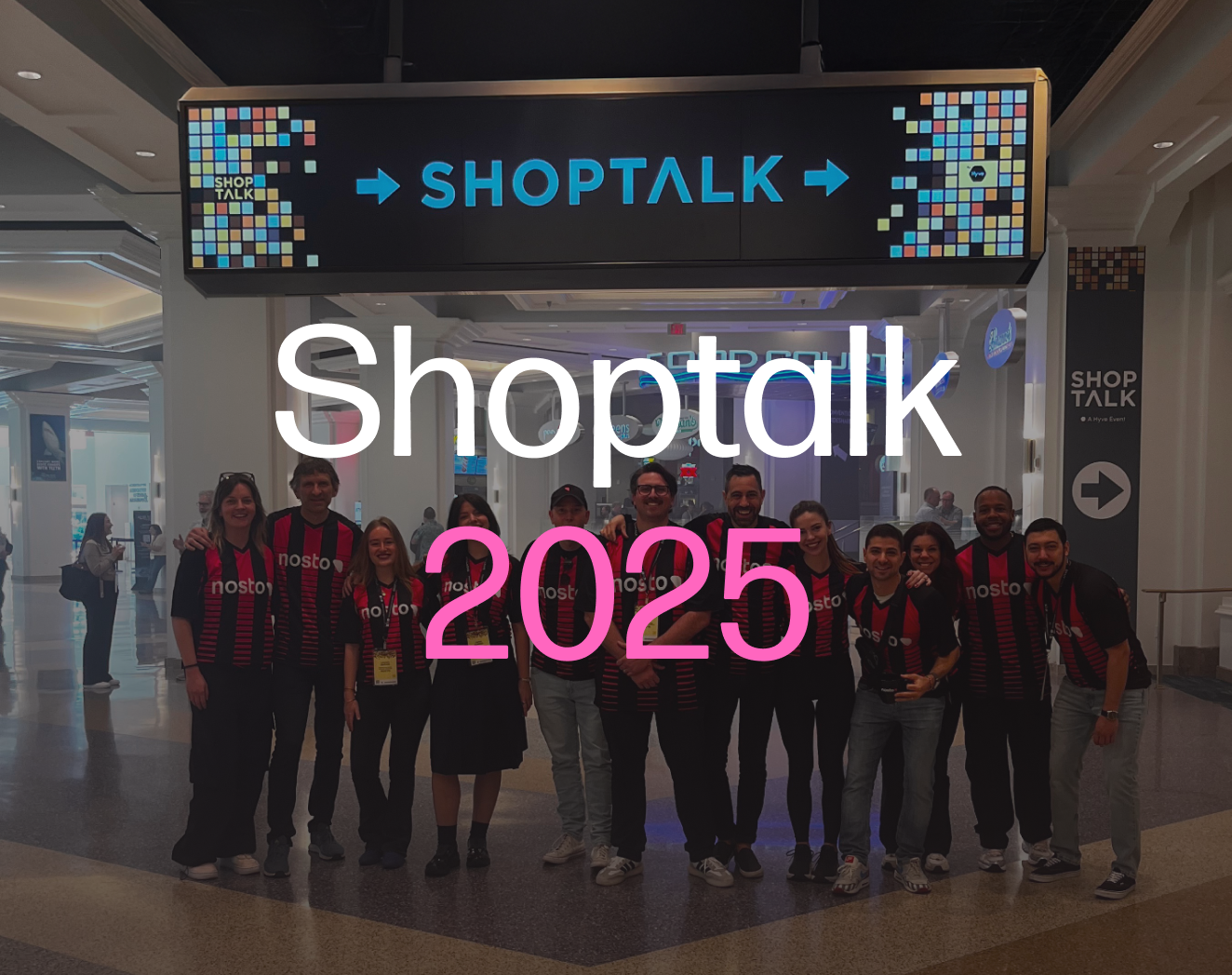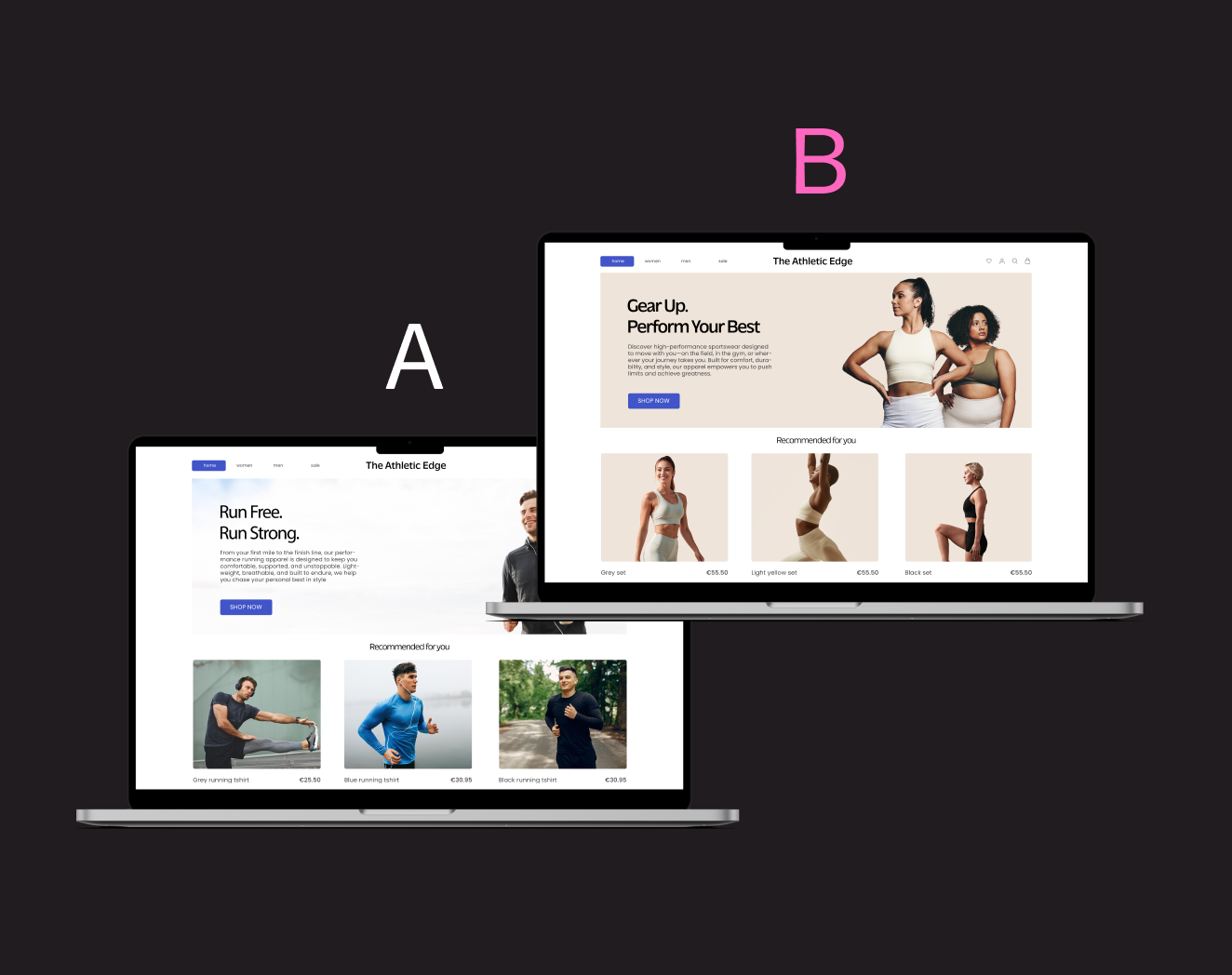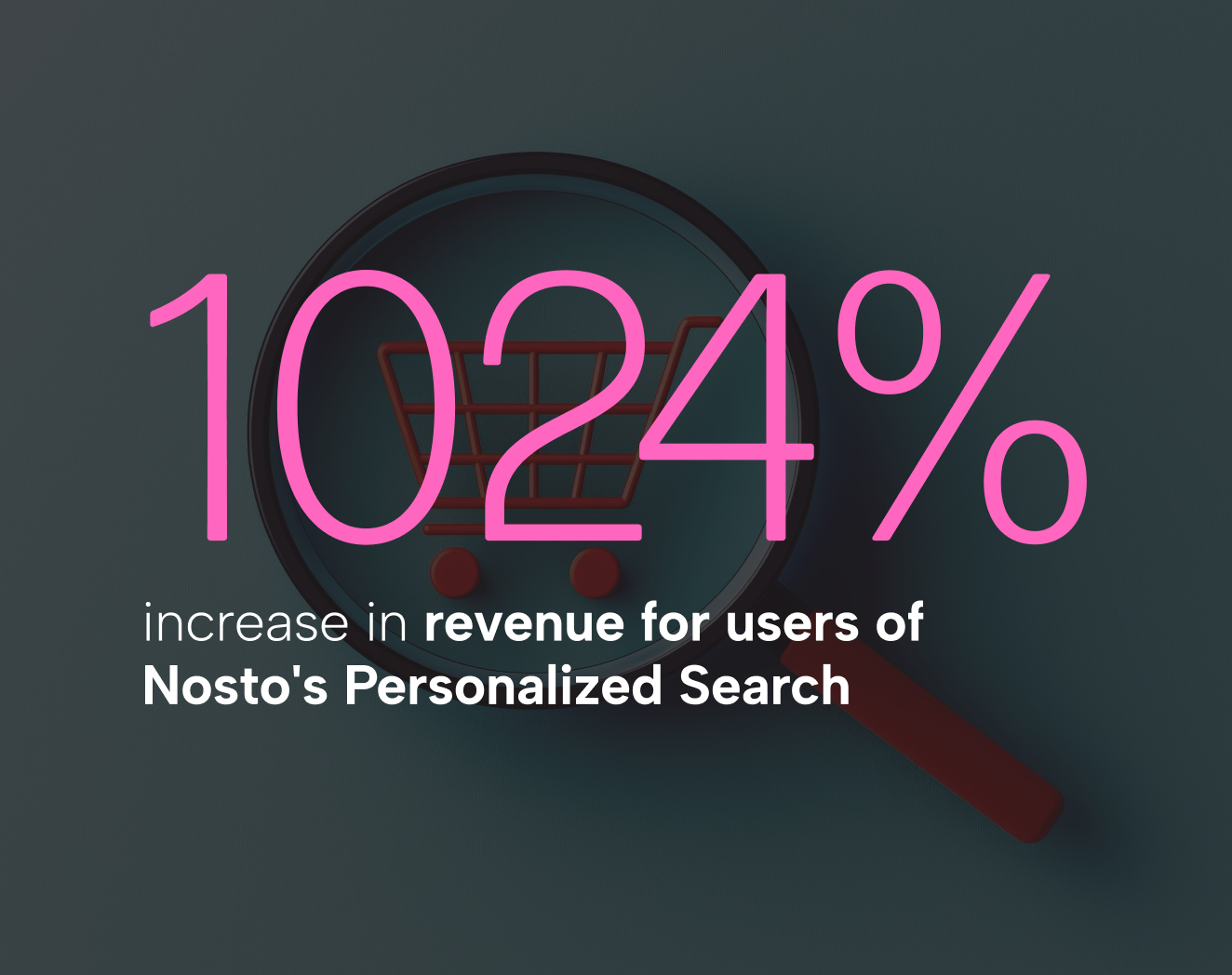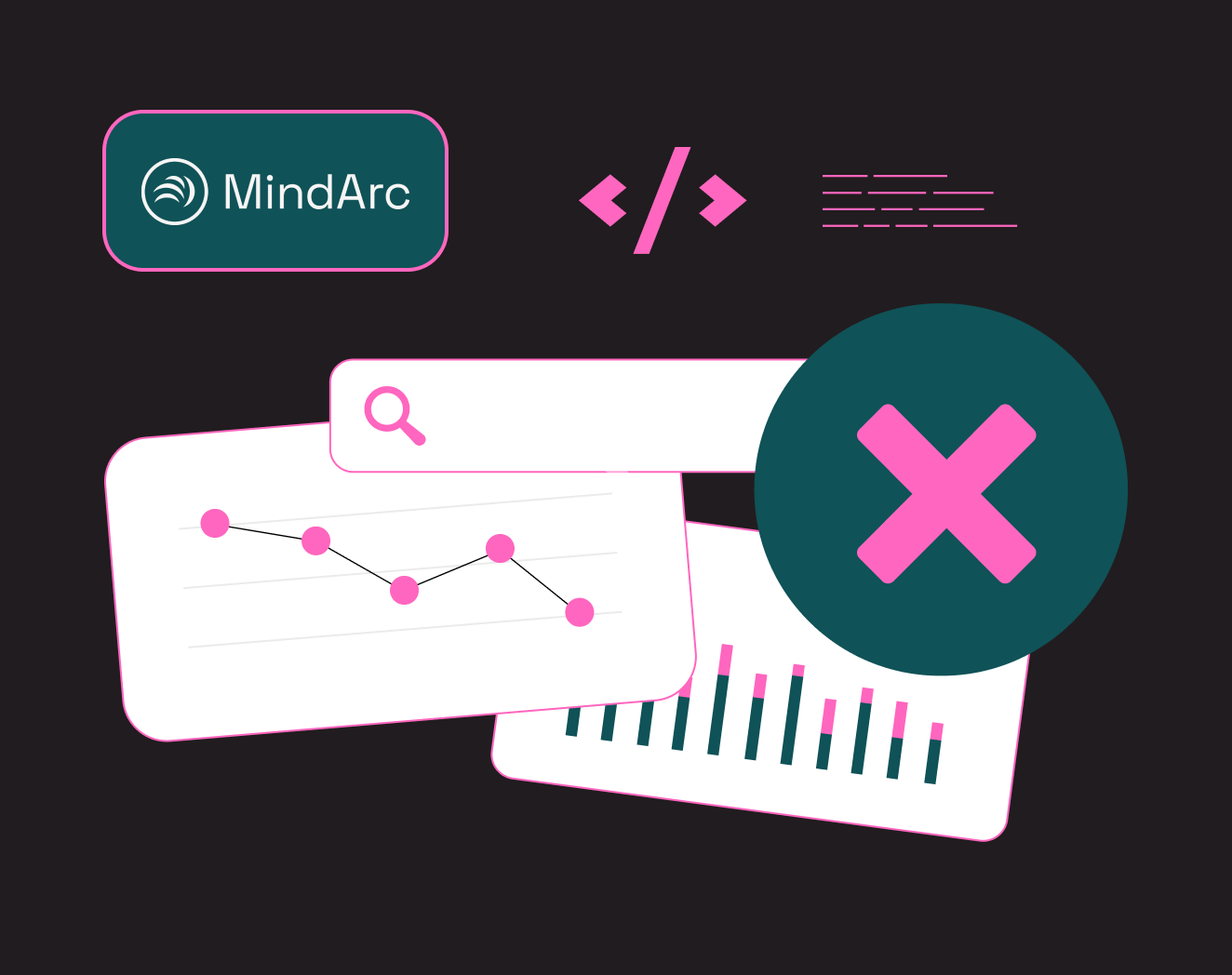What is User-Generated Content? The Ultimate Guide to UGC Marketing
The days are over when only professionals made content for massive companies and ad agencies.
Now, anyone can create and share their own content easily.
Almost everyone can create good social media content using their smartphones, so people are constantly making their own content. Plus, with people posting content through social media platforms, enter the age of user-generated content.
But just what is user-generated content? And how can user-generated content impact brands?
Here’s a scenario for you:
You’re enjoying a weekend trip at a nice hotel. You post lots of pictures from your hotel stay on Facebook and Instagram, tagging and geotagging the hotel to show your friends and followers how cool it is and where it is.
That photo is user-generated content.
Now, let’s say that this specific hotel finds your content on social media. They reach out to you and ask if they can share your social media images across their channels.
That’s a brand taking advantage of user-generated content as part of their marketing strategy.
Read along for our ultimate guide to user-generated content.
We’re showing how your brand can use it to strengthen your marketing and create more meaningful connections with consumers.
What does UGC mean?
UGC stands for user-generated content.
By definition, UGC is any form of content—text, posts, images, videos, blog posts, reviews, etc.—created by individual people (not brands) and published to an online or social media network.
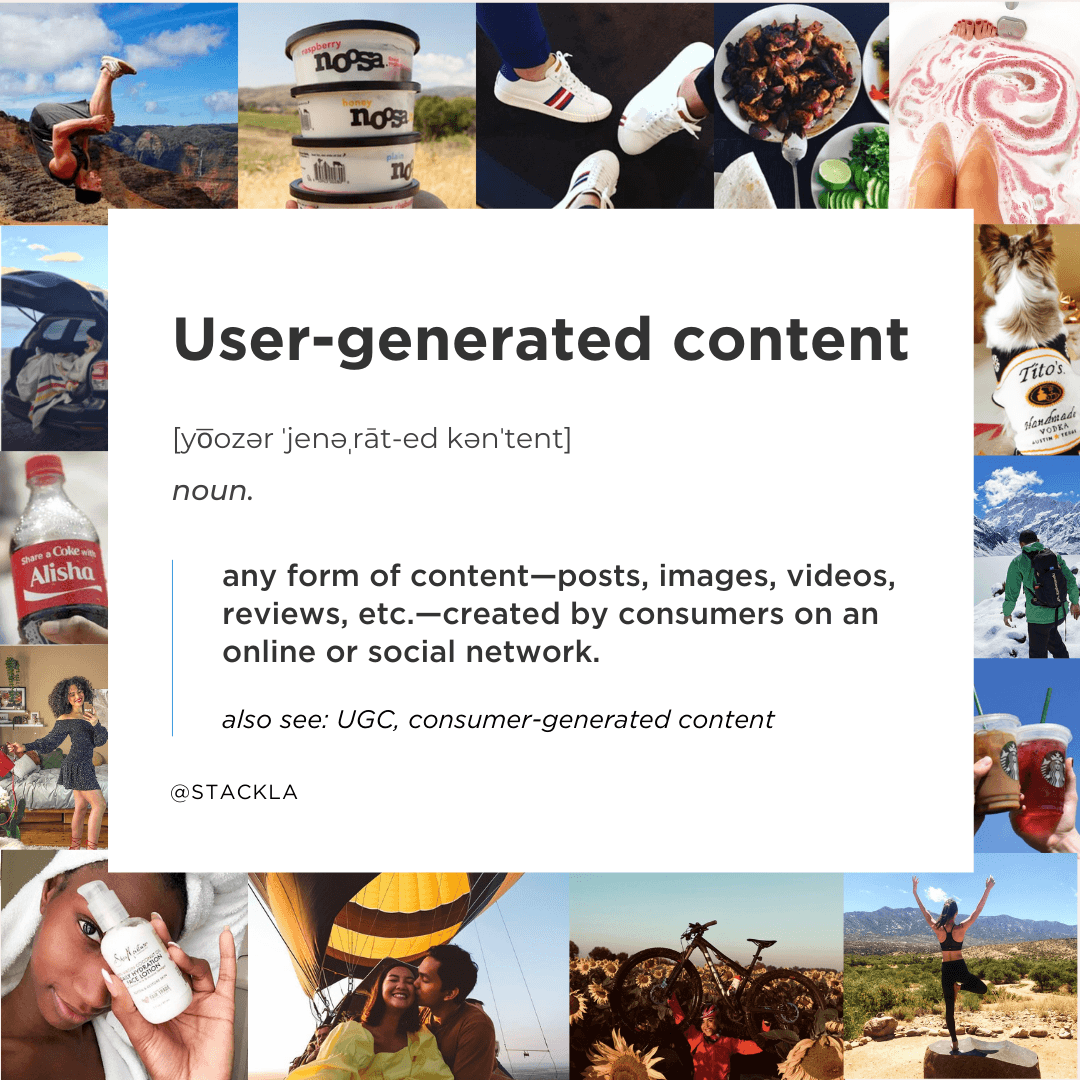
User-generated content has been around as long as social networks and customer review sites have.
Brands took notice of visual UGC as early as 2005 when social networks became mainstream. They recognized its immense potential for gaining valuable social proof and engaging audiences.
But there’s more to UGC than just growing a brand’s earned content.
User-generated content and its impact on branding
Initially, online stores and businesses were cautious about using social media content to represent their brand, and rightly so.
At first, it was hard to justify exchanging perfect-looking professional content for unpolished consumer content. Phone cameras are improving quickly, and social networks make user-generated content easy to find. Brands can no longer ignore this trend.
Everyday consumers have now become the world’s greatest content creators.
On any given day, 350 million photos are uploaded to Facebook, 95 million photos and videos are shared on Instagram and over 500 million tweets are posted on Twitter.
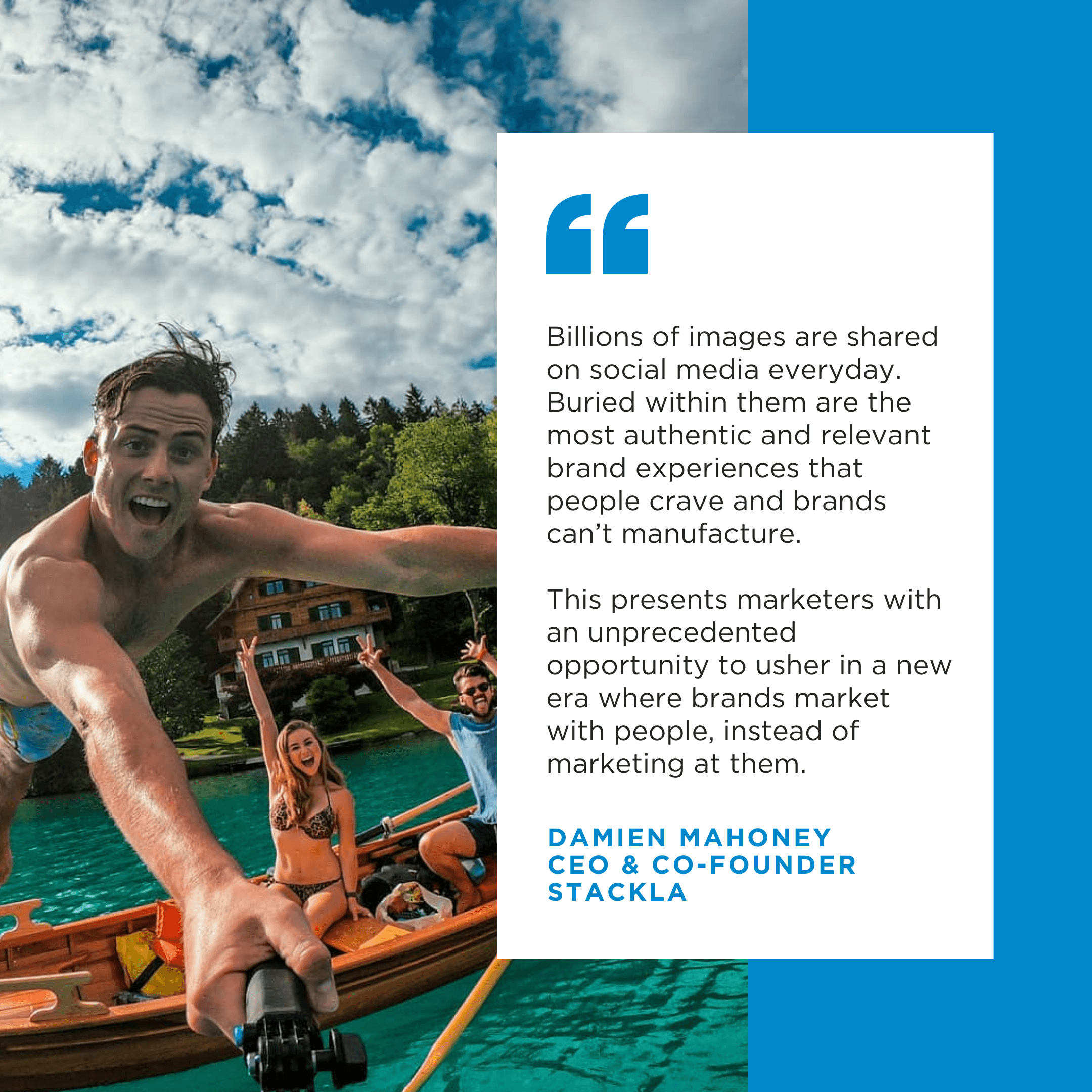
Data shows that UGC has become the most trusted, memorable, influential, and freely abundant source of content that marketers can use.
Here are a few reasons why:
1. UGC is authentic
Marketers spend time and money creating messages and images they believe consumers will like. But it turns out consumers don’t want perfect, they want real.
When asked, 90 percent of consumers say authenticity is important when deciding which brands they like and support, and 60 percent say UGC is the most authentic form of content.
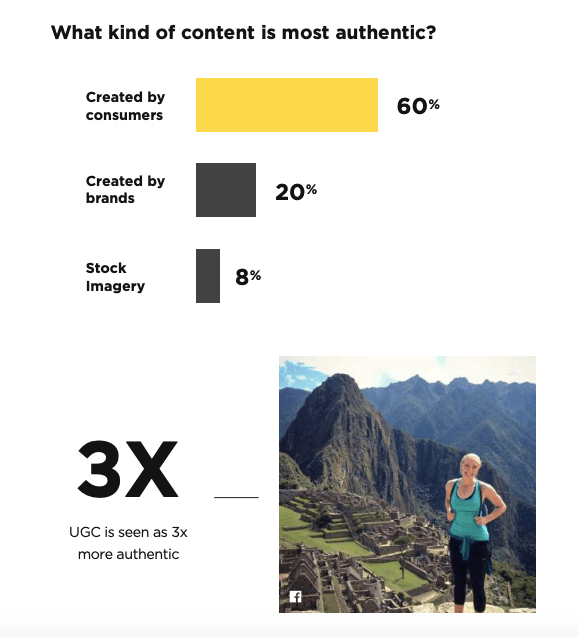
People more readily trust the recommendation of a real person over what a brand says about itself. In fact, 56 percent of consumers said consumer-generated content was what they most wanted to see from brands. And, only 15 percent said brand-created content was what they wanted to see.
So why is UGC viewed as authentic and trustworthy?
Consumers simply relate more to everyday people who resemble themselves or people they know. Plus, UGC can’t be faked, either.
In a study, people could detect whether an image was created by a brand or a consumer 70 percent of the time.
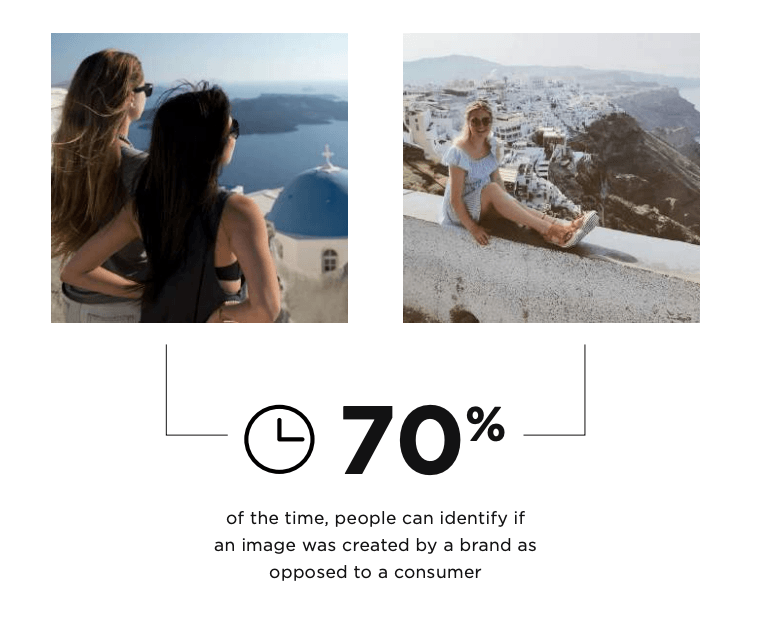
2. UGC inspires brand loyalty
Brands that take advantage of readily available UGC are brands that put their audience first—talking with them rather than at them. As a result, UGC has the potential to deepen the connection between brand and consumer.
UGC allows people to feel like they are a participant in your brand instead of just an onlooker.
The result of more UGC in your marketing means higher levels of brand enthusiasm and the cultivation of more loyalty toward the brand.
“I think many marketers who have been in the industry for a long time are worried about maintaining the voice of the brand. But, the voice of the brand is not always the same as the voice of the customers. We’re moving closer to times where a brand’s identity is the same as their customers’ identity. Our consumers are giving us exactly what they want to see. It’s important that we’re listening to those needs and providing what they want.”
– Sabine Schwirtz, (Former) Community Manager at LUSH Cosmetics
3. UGC is Memorable
Marketers are constantly battling to cut through the noise to grab and hold people’s attention. You can come up with the best message or imagery, but what is it worth if no one remembers it?
User-generated content has been proven to be more memorable than traditional advertising. Millennials, in particular, find UGC 35 percent more memorable than other media.
4. UGC builds customer trust
Today, trust is the marketing Holy Grail that brands are seeking to get from their audience. Of course, it’s also one of the hardest things to achieve.
User-generated content builds consumer trust because it’s genuine and encourages interaction between people and businesses. People can easily identify whether a consumer or a brand created an image. Moreover, 92 percent of consumers trust earned media (suggestions from friends, family, or colleagues) more than any other type of content.
People trust UGC because it is memorable and freely abundant. Now, it’s one of the most important types of content because of this.
5. UGC influences consumers and improves conversion rates
The numbers don’t lie. The more a brand uses UGC, the more it inspires people to convert.
Acting as a powerful source of social proof, 79% of consumers say their purchasing decisions are highly influenced by UGC.
In comparison, only 8% of people say that celebrity or social media influencer content impacts their purchasing decisions—making UGC 9.8x more influential than social influencers.
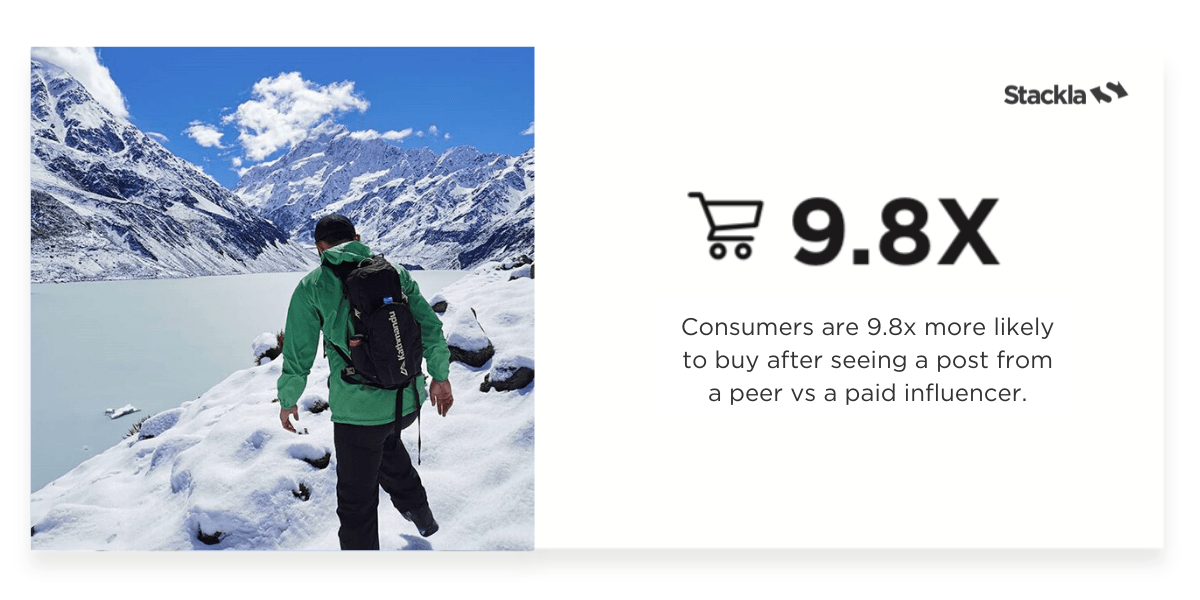
After replacing almost all their visuals with user-generated photos, tour operator Busabout increased their online conversions by 33%.
Air France also found that including user-generated content in Facebook ads produces 11% higher click-through rates and a 21% drop in cost-per-click.
How’s that for the impact on the bottom line?
6. UGC cultivates community
Tapping into people’s innate desire to belong has an incredible power to it. We humans are highly social beings, after all.
Brands are recognizing the significance of human connection in marketing. They are now prioritizing it in their strategies. Building an active brand community is a higher priority now for business than it ever was before.
But why?
When a brand inspires a community, it creates more direct interactions between brands and consumers. They also happen among the followers themselves. When loyal customers talk and connect about loving your brand, it’s a win-win for marketing.
User-generated content helps facilitate the sense of community that consumers seek. It encourages customers to get excited—making them want to make a purchase and share their own experience as a way to be involved in that community.
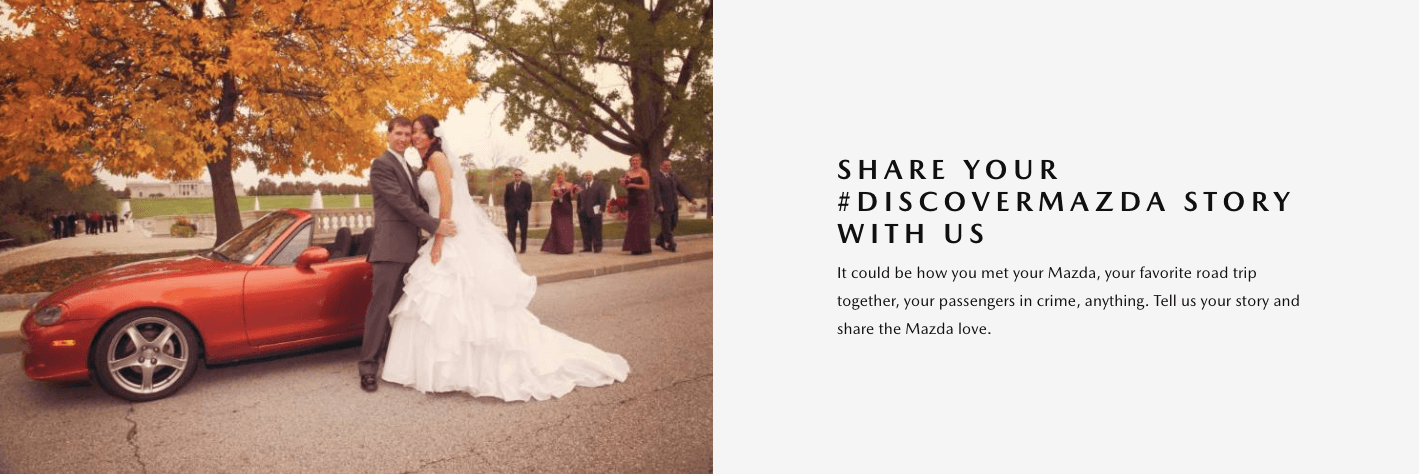
7. UGC is scalable
So many digital channels, so much demand for fresh content, yet so little time. In today’s digital landscape, brands can hardly keep up with all of the channels they’re expected to fill with high-quality and engaging content.
Whether it’s for landing pages, social feeds, digital ads, or billboards, there’s a lot of pressure to produce more content than was ever expected of them before. For those able to keep up, it pays off. According to Facebook, the fastest-growing advertisers on its platform generate 11 times more creative assets than their peers.
Meanwhile, the quality, quantity, and velocity of user-generated content continue to multiply. UGC offers valuable content for marketers and gives consumers the personalized, visual experiences they desire.
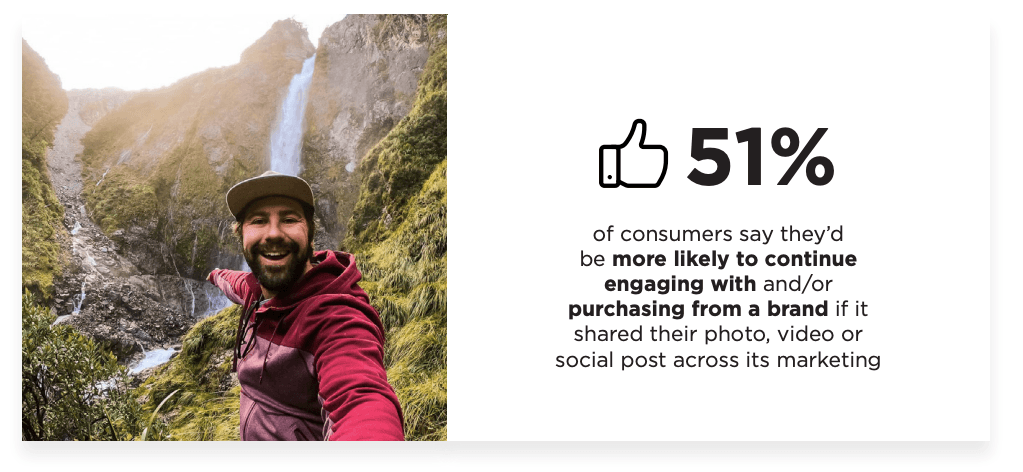
On average, over 56 percent of consumers would grant a brand permission to use their image or video in its marketing and 51 percent said they’d be more likely to engage with and/or purchase from a brand if it shared its social posts in its marketing.
UGC helps brands scale up their content initiatives easily and seamlessly, especially when they have a robust tool to help them curate and publish all of that content.
8. UGC is cost-effective
In addition to all the above benefits, using UGC is also cost-saving. Think about it: instead of spending a lot of time and money hiring creative teams to develop a limited number of content assets, only to have to do it all over again in a month or two (if not a few weeks), this work can now be outsourced to regular people who are already enthusiastically talking and posting about your business online.
With UGC, content-starved brands get access to the wealth of assets they need without having to pay big dollars for studios and professionals. If people are already out there creating positive content without being asked—and, for the most part, doing it for free—UGC as a cost-effective marketing strategy is a no-brainer.
Remember Busabout? By switching most of their online visuals over to UGC, they cut their content costs by 65 percent.
Types of user-generated content
Now you know all of the user-generated content benefits and why consumers prefer UGC over brand-generated content. But what types of user-generated content are out there?
UGC can be anything from blog comments and product reviews to high-quality images and videos created by users.
Typically, UGC falls into two categories:
- Visual UGC
- Ratings and reviews
Colorful imagery and video clips are essential to consumers—especially when it comes to buying items online. When people can’t physically inspect a product, they rely heavily on visuals and video to see if it’s something they would want to use (like a pair of shoes) or experience (like a restaurant or hotel).
This is especially true for younger groups; 50 percent of Gen Z and 49 percent of Millennials cite being influenced by photos and videos to make purchasing decisions.
Visual UGC can come from:
- Customers: People praising your product and posting imagery of it online are some of the best UGC brands can get. Leveraging organic posts of regular people using your product in a real-world setting offers inspiration and influential social proof to shoppers.
- Advocates: These are the people who not only buy your products but are also enthusiastic and highly engaged with your brand—perhaps active in your brand community or loyal repeat customers. Since advocates are so passionate and close to your brand, you can often directly request that they create specific types of UGC around campaigns, specific products, etc.
- Employees: Good UGC also comes from the people representing your brand every day. Also known as EGC (employee-generated content), this type of content can give an inside look at what your company culture is like. It also gives your audience a unique, compelling and expert perspective on your business.
Customer ratings and reviews
As early as the late 1990s, sites like Amazon, Tripadvisor and Yelp began allowing customers to publicly post reviews of a product or service for other people online to see. While maybe not as aesthetically pleasing as visual content, UGC in the form of customer ratings and reviews is highly important. After all, more than 88 percent of shoppers incorporate reviews into their online purchasing decisions.
Customer reviews and product ratings add an extra layer of assurance before people decide to buy, which helps to further build customer trust and your business’ reputation.
The challenges of user-generated content
Of course, with all great things comes their own set of challenges. Here are some of the most common hurdles brands will need to overcome to use UGC effectively in their marketing campaigns:
1. User-generated content rights
As brands increasingly turn to UGC, the topic of user-generated content rights management has become a more important talking point. Businesses have to ensure all of the content is being used legally, i.e. getting permission from the individuals posting the content.
Despite the fact that most UGC is public, brands still must be wary about permissions and terms of use from social media platforms.
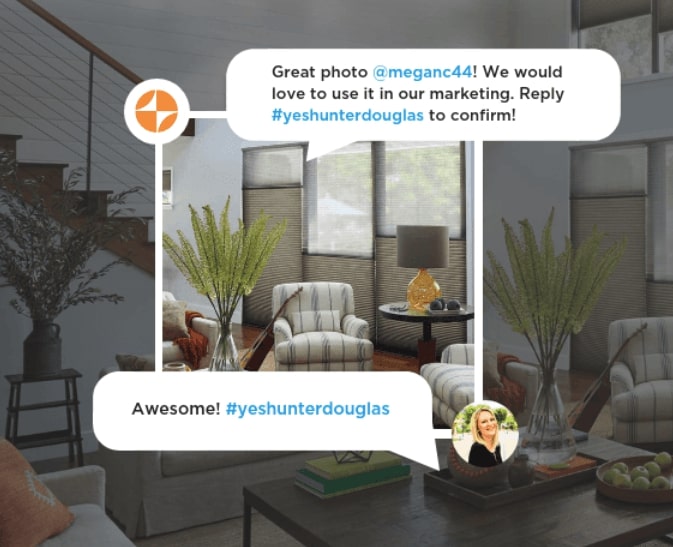
Stackla provides a number of rights management workflows allowing brands to reach out to content creators and request rights to certain content. Stackla also has a Direct Uploader feature, which allows people to submit UGC directly through a form and dictate their own terms and conditions if they prefer the content they create for you to not be public. Learn more about UGC rights management best practices here.
2. Scalability
Earlier we mentioned scalability as a benefit of UGC, but this can also be a challenge. When marketing teams (or just one overworked social media employee) decide to collect user-generated content manually, it can quickly get messy and complicated. Scouring the Internet seas for UGC is a huge time investment. It requires asking users one-by-one for permission, downloading and then uploading all of those assets to one centralized place, and organizing it.
3. Getting quality UGC
One of the drawbacks of crowdsourcing content? Finding that perfect UGC image can sometimes feel like searching for a needle in a haystack. While brands now have unprecedented access to UGC, not all of the content pouring in is of the best quality.
Of 300 brands and agencies surveyed in a 2020 Cohley and Digiday report, 79 percent said finding high-quality user-generated content was a struggle.
To get the best quality images from your audience, you can do three key things:
- Define what kind of visuals you want: Establish within the marketing team what UGC means for your brand. Do you want media with a specific kind of composition, for certain channels or of a particular product or service? Understanding this will help you know what types of visuals you want to get from your audiences.
- Be specific with content asks: Remember to always be clear and concise in your content asks. When you’ve decided what types of UGC are most important for your brand, inspire your audience to create it by showing them examples of what it could look like.
- Build a creator community: To proactively develop a long-term UGC strategy, try getting your passionate customers to become an active community of content creators. Create a centralized destination to communicate with them online, then explicitly ask (and maybe even reward) them to create and share the types of content your brand needs. Not only will this help grow your content library, but it will also enable you to form deeper connections with your best customers.
Learn more strategies for driving high-quality UGC.
Integrating a user-generated content strategy into your omnichannel marketing
Okay, now you’re sold on the idea of using UGC as a key component of your marketing strategy. What do you do next?
User-generated content can be used to drive impactful results across all your marketing channels and every stage of the buyer’s journey. Let’s look at how it can be used across:
- Social media
- Digital ads
- Websites
- Commercials
- Digital-out-of-home billboards
For this, it’s best to show by example.
User-generated content examples
Here are some of our favorite instances of how brands are tapping into the power of UGC to help drive their omnichannel marketing:
Sharing user-generated content on social media channels
One of the most classic ways to collect and share UGC is via social media. For example, Canon has multiple Instagram channels completely powered by UGC—most notably their Canon Australia account.
View this post on Instagram
Canon Australia’s Consumer Engagement Manager, Jensen Baptista, said, “The foundation of our channel strategy has been to introduce people indirectly to our brand through our consumers. Instagram is our fastest-growing channel and it’s powered 100 percent by user-generated content.”
View this post on Instagram
This strategy paid off for them. The Canon Australia Instagram account was growing by over 100,000 followers every year and today they have garnered a following of nearly 400k followers as of this writing.
Display UGC in social and digital ads
As we mentioned earlier, UGC has shown to be incredibly effective in social and digital ad campaigns.
Take Toyota for example. In an effort to speak more to the 18-24-year-old demographic, Toyota wanted to inject more authenticity into their digital ads. They turned to user-generated content to fuel their Feeling the Street Facebook ad campaign. Without increasing spend, the UGC-powered ads achieved over 1.2 million engagements (likes, shares, comments) in just six weeks—a 440% improvement over the previous year’s campaign.
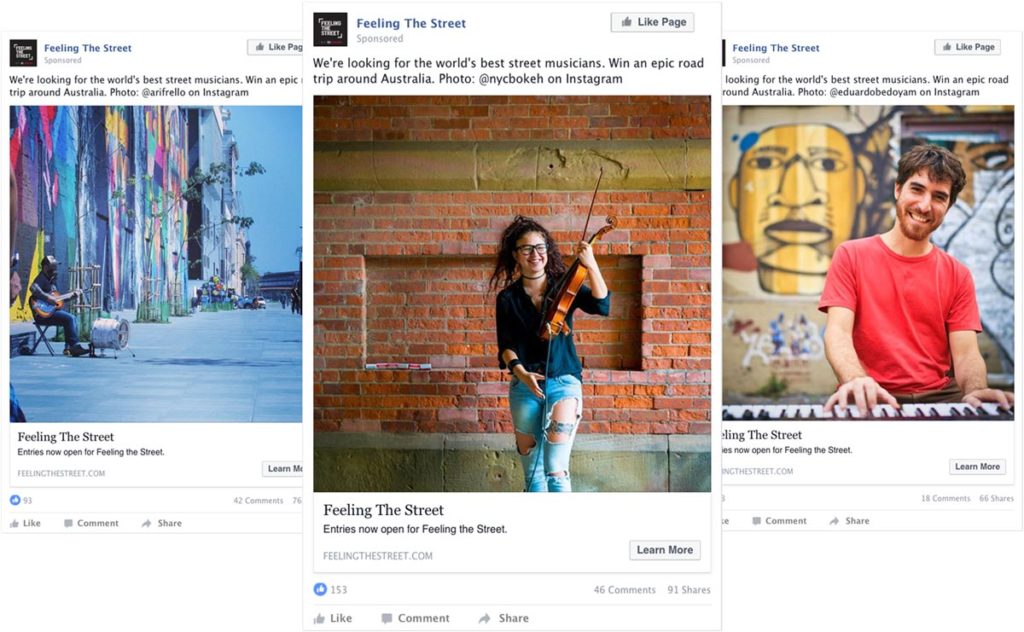
Showcase user-generated content on your website
Your brand’s main website is a place that is ripe with opportunities to insert user-generated content. When creating it, it’s important you choose a website-building platform that enables you to untap UGC’s potential to the fullest.
Here are some examples of how brands maximize UGC on different webpages:
Homepage
Displaying authentic UGC across the homepage of your website can show people the benefits of your product or service at a central touchpoint.
James Hardie, a home building company, has a user-generated content gallery on their homepage showcasing what the final product of their customer homes look like. Customers post their photos to social media using the #MyHardieHome tag, which the brand then curates and publishes to the UGC feed on their homepage. The widget even links out to an inspiration page full of shoppable UGC!
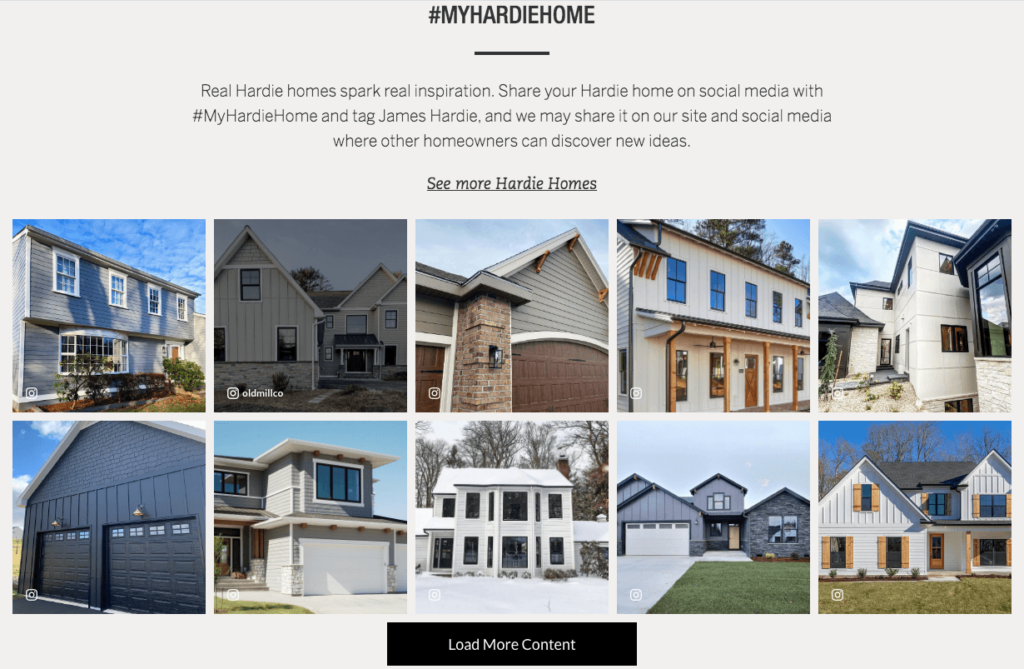
Product detail pages (PDPs)
Product detail pages are some of the most crucial pages, especially for eCommerce brands.
Bath, body, skin and haircare company, Lush Cosmetics, inserts UGC into many of their PDPs—helping to build consumer trust in the product and move customers from being inspired to making a purchase. Lush even makes the displayed UGC a shopspot, meaning users can click on the content and be directly taken to the link to buy.
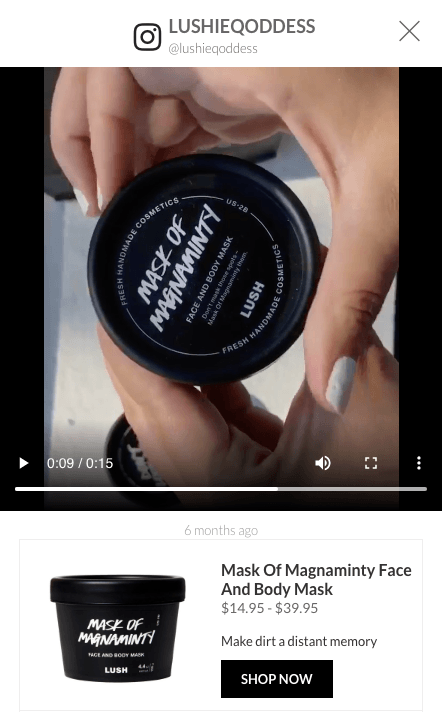

For its iconic 4.5-star-rated Mask of Magnaminty, browsers can see at the top of the page that the product has over 1,400 reviews, with the direct link to read them.
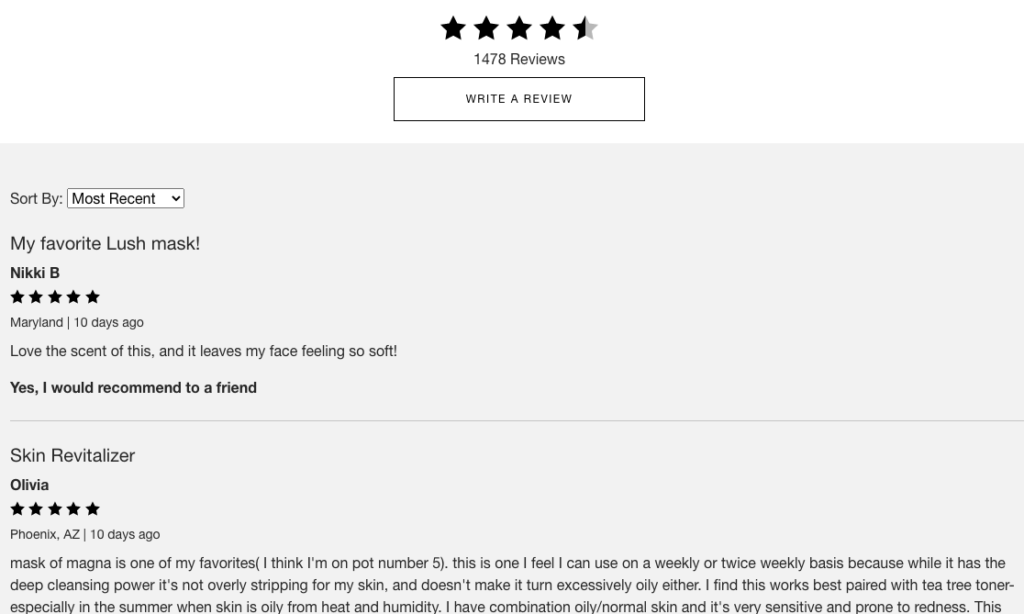
Inspiration pages
Because UGC inspires people to buy, rolling up all of the best UGC generated by customers into an inspiration page is a great way to make your products more real for people (and convince them to buy from you).
Smile Direct Club does this by having a ‘Results’ page at the top of their navigation. It features before and after photos from real customers to show people the difference their products make in customers’ smiles.
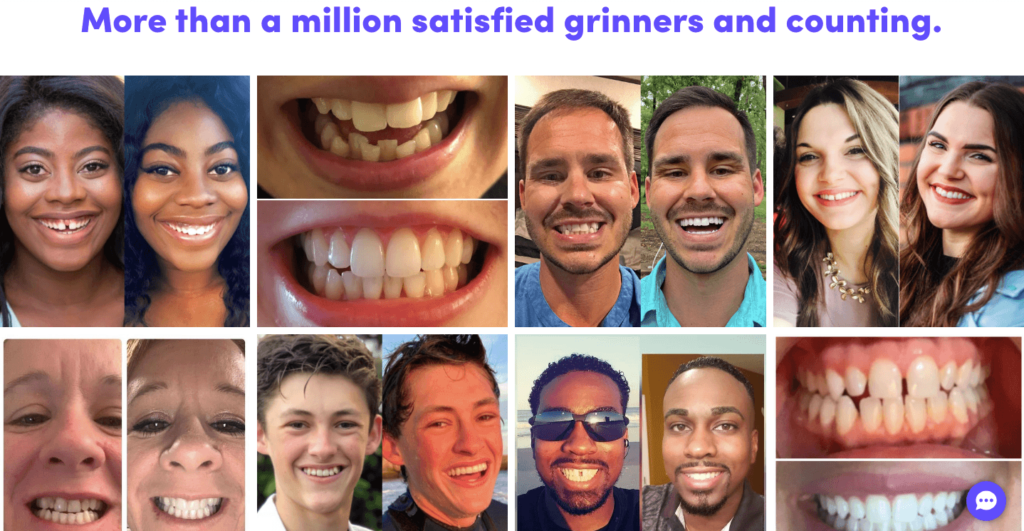
Community pages
Timeshare company, Resorts Condominiums International (RCI), has a dedicated page on their site just for their community. They encourage members to join the community by uploading photos and videos of their vacation experiences and/or using the #myRCI tag on social media posts.
Under the call-to-action for UGC, the community page contains a user-generated content gallery showcasing the photos and videos of people who have shared their special RCI vacation moments and stories.
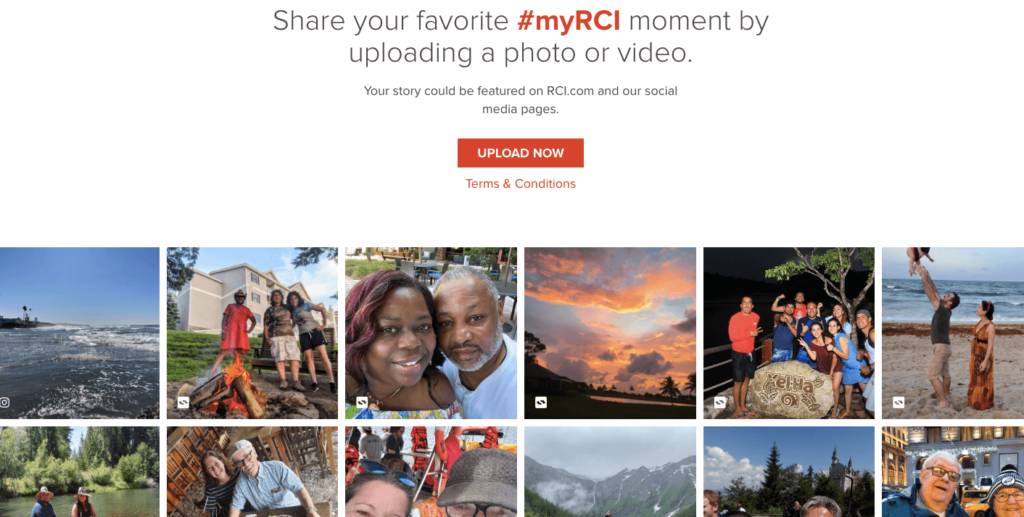
Blogs
Your blog is both a place to showcase visual UGC and share customer stories. When COVID-19 hit, Michael Hill, an international jewelry brand, launched a #sharethelove campaign encouraging customers to ‘share moments of kindness, joy and love in the world’ to help foster connection during the quarantine period.
They took the campaign one step further by featuring the touching story of two sets of engaged couples who had to postpone their wedding due to the pandemic. By showcasing real photos of the private backyard ceremonies these Michael Hill customers had, they forged deeper and more personal connections with their audiences.
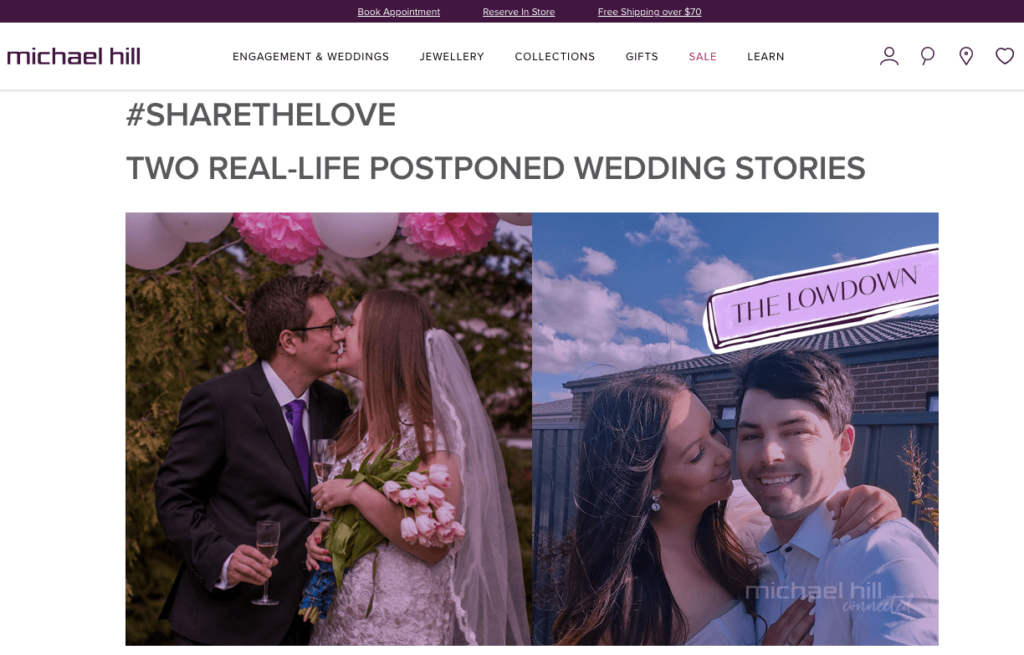
This is a strategy they use regularly in their blog. The jewelry brand also uses UGC as the hero images for many of their posts as a compelling way to grab readers’ attention.
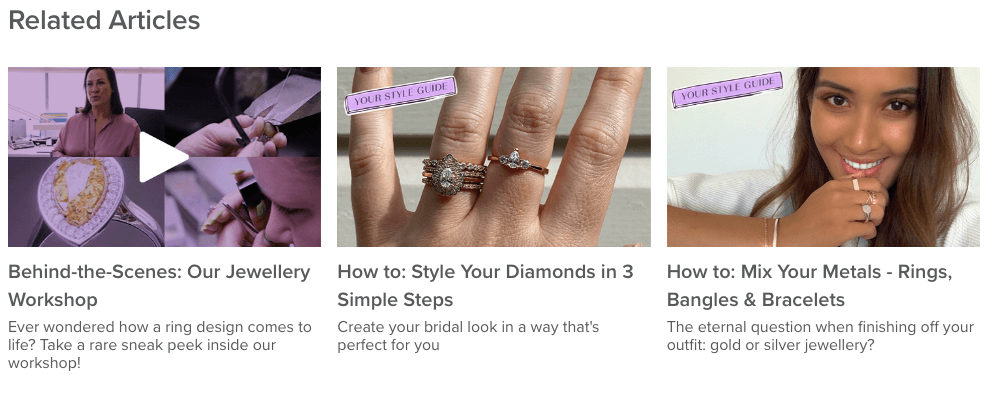
Feature UGC in your email marketing campaigns
At Stackla, we regularly help brands leverage UGC throughout their email campaigns. On average, these brands increase their email click-through rates by 13 percent and improve their email conversion rates by an average of 35 percent. That’s pretty impressive!
There are many kinds of emails marketing teams send to target audiences. Here are some examples of different ways brands use UGC in their emails campaigns:
Newsletters
Australia’s Tourism Northern Territory has a UGC section on their NT adventurers email newsletter. They curate their favorite user-generated images from people on Instagram who have used #NTAustralia in their posts to show their audience places other people have visited.
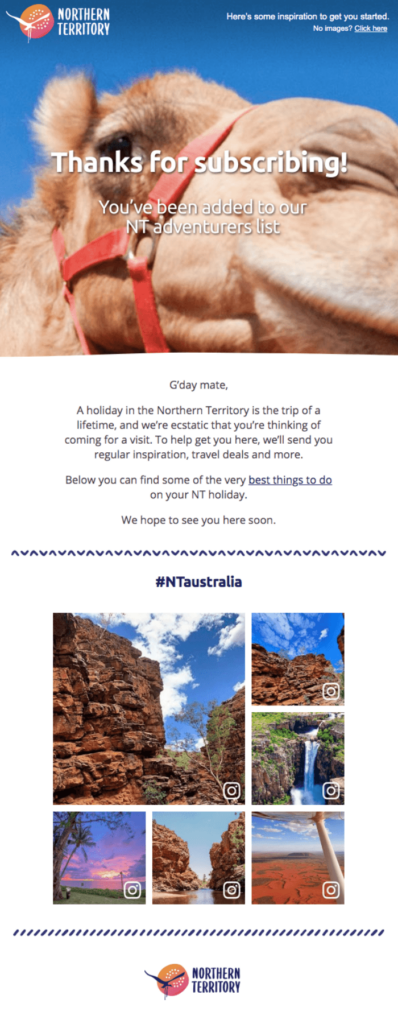
Promotional emails
Kmart Australia took UGC generated from their “Loved by YOU” marketing initiative to illustrate what products look like IRL.
They found customer-generated images tagged #Kmartaus and paired them side-by-side with the shoppable image tile as a way to compel email recipients to be inspired to purchase.

Community emails
Outdoor Voices made an end of 2020 event wrap up email that featured a grid of animated UGC content. It was sent out to their community to celebrate people’s involvement with Outdoor Voices virtual events. This was part of the #DoingThings campaign they ran during the COVID-19 pandemic. It also included a virtual workout event RSVP call-to-action at the bottom.

Transactional emails
Once a customer is ready to purchase or has already converted, transactional emails are a way to get them to come back and also continue engaging them. Here are some examples:
Shopping cart abandonment emails
DTC beauty brand Glossier is great at developing personalized emails for their audience. Some of their emails contain authentic product content generated by everyday customers, like in the email displayed below.
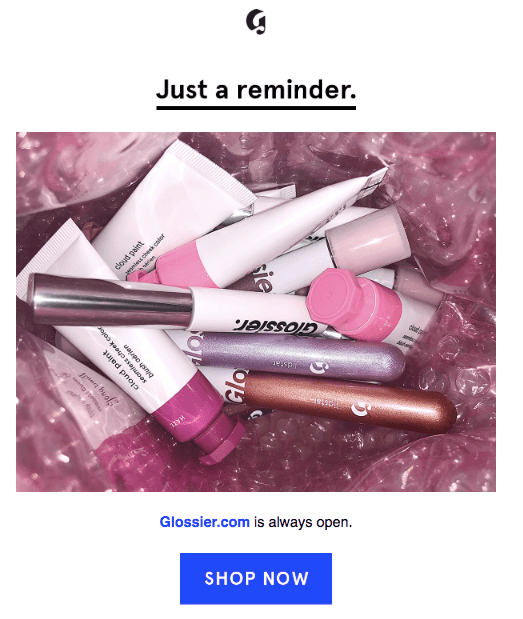
By plugging UGC into shopping cart abandonment emails, brands can reinspire those who left the site before making a purchase by showing them what their purchase will get them: a fun goodie bag of Glossier products.
Post-purchase emails
Expedia Hong Kong is consistently looking to improve its customer experience. UGC has helped them do this in their post-purchase emails. To further engage customers even after a booking, Expedia included relevant UGC for each destination—personalized to each customer based on where they booked.
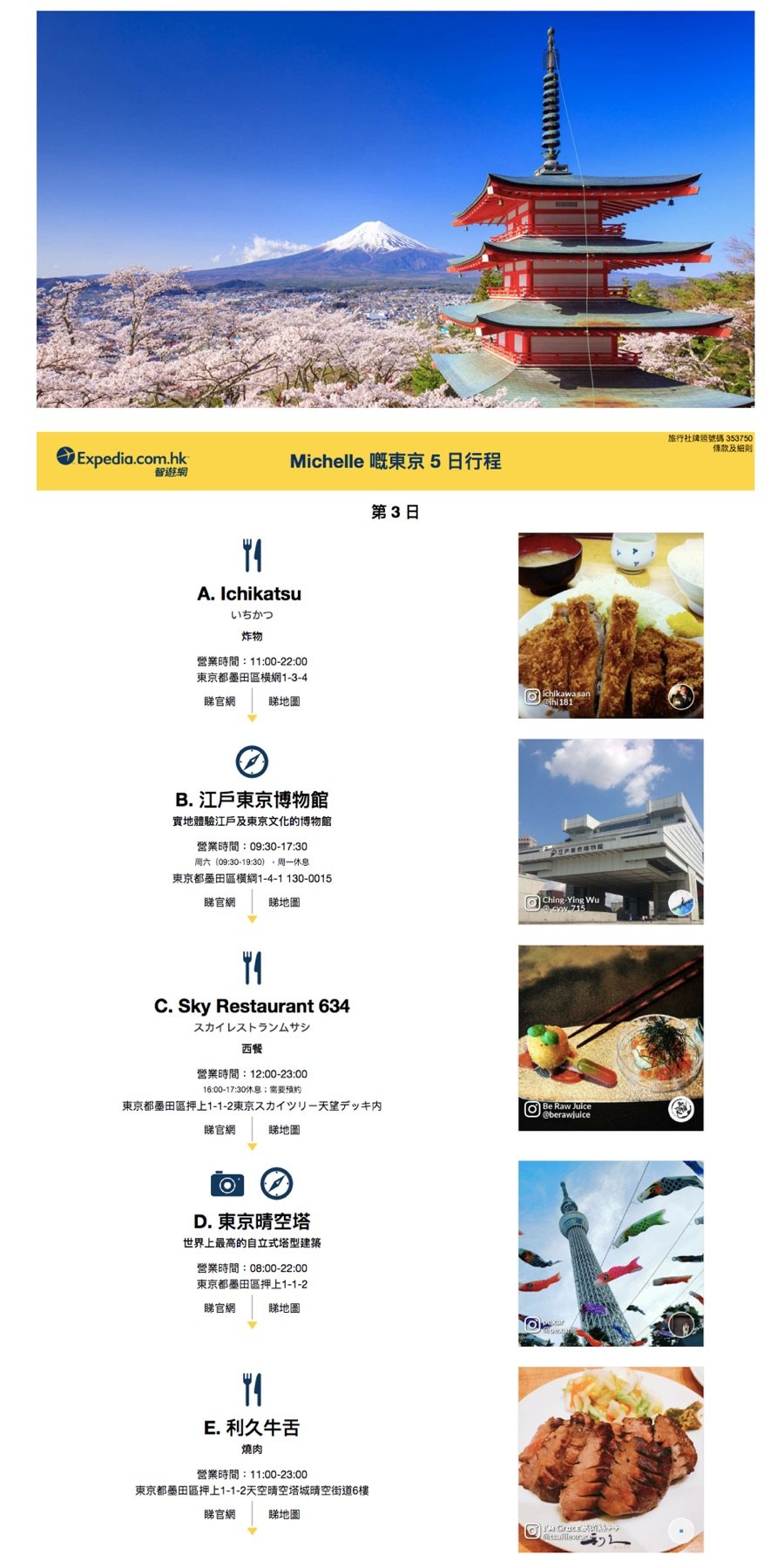
Create more relatable commercials with UGC
User-generated content also translates well to TV and video promotions. Beachbody, a fitness company, took user-generated videos of its subscribers doing the different workouts offered by the program and used them to get other people excited about joining the Beachbody community.
Highlight user-generated content in digital-out-of-home (DooH) billboards
Digital-out-of-home (DooH) is yet another avenue brands can take advantage of with UGC. During London Fashion Week, high street clothing brand TOPSHOP wanted to extend the excitement of the runway beyond the closed-door events. They used digital billboards in several UK cities to display #LIVETRENDS content from the runway and point people to the nearest Topshop stores. These aggregated tweets and photos from industry editors, stylists and bloggers were analyzed and showcased as DooH experiences real-time.
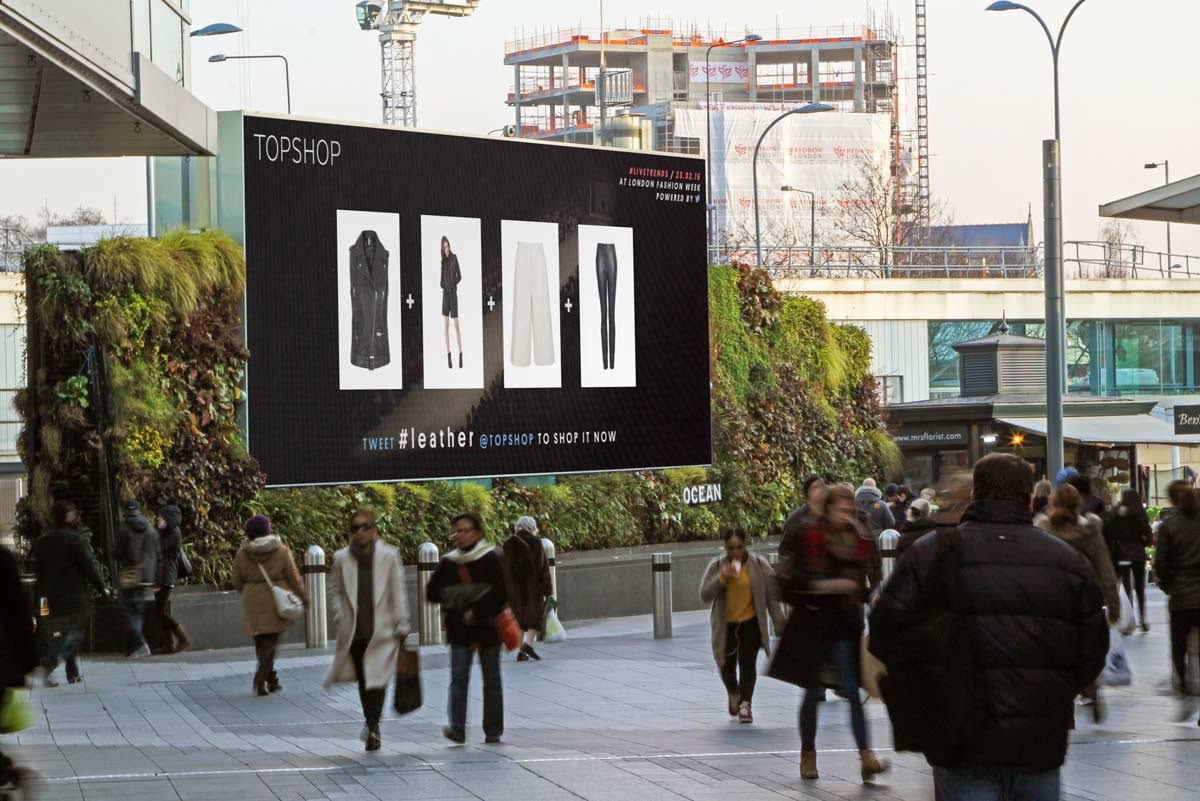
Taking it a step further, TOPSHOP made the campaign shoppable by allowing customers to purchase items from the catwalk and be ahead of the trends.
How to find and aggregate user-generated content
After all that talk about what is user-generated content, how great it is and showing you some examples, now you’re probably thinking: Yeah okay, that’s great, but how the heck do I start collecting and organizing all of that UGC?
While many brands typically test the UGC waters by manually searching for customer-created content on individual social networks, this can quickly become a cumbersome and laborious task—especially those with large, socially-active followings.
Having thousands of customers avidly generating UGC is something every brand wants. The only downside is the more content that’s out there, the more challenging it becomes to sift through to pick the best UGC.
For many brands, the best answer is to go with a UGC platform that can do the heavy lifting for you. Stackla is a great option that helps brands find the UGC they want, aggregate it, rights manage and publish it out to all their different channels. Learn more about the product here.
How to encourage people to create user-generated content
Sometimes, getting the specific content your brand is hungry for requires a little effort. Here are some best practices for encouraging your audience to create amazing user-generated content for your brand:
- Ask people for UGC: It’s pretty simple, but tried and true. If you want people to get creative and make lots of pretty content for your business to use, simply ask them!
- Make it easy + simple: The fewer barriers to sharing UGC, the better. Have your marketing team come up with a simple yet creative hashtag that people can use whenever they post about your brand, product or campaign. Tell them clearly what your social media username and handles are so they can tag you in their posts. You can even give people a way to directly submit UGC to your site.
- Run a competition: If you’re having trouble getting enough UGC, try incentivizing people by running an online competition where your brand picks winners, and maybe even throw in a free giveaway. Learn more on how to build a winning social competition.
- Host an event: Have a virtual or in-person event with fun activities encouraging people to generate UGC and get as creative as they want with it. Have some fun instagrammable backdrops, or motivate people to dress up and turn on their camera for virtual meetings.
There is plenty of fun, creative ways to generate tons of UGC for your brand.
Better UGC curation with AI
Advanced artificial intelligence (AI) and machine learning can help marketers save time by quickly surfacing the best user-generated content to reflect their brand and making recommendations on which content will perform best with their audiences.
A recent report found that 59 percent of brands said AI tools assist their marketing teams in campaign content targeting.
As user-generated content become a bigger part of brands’ content strategies, marketers should be looking to AI-driven tools to help them find, manage and optimize their growing library of digital assets.
User-generated content and influencer marketing
You’ve probably heard before that bigger is not always better, and this rule definitely applies to influencer marketing. Many brands in recent years have relied on social media influencers to increase brand awareness and engage people. But more and more, brands are turning to micro-influencers—individuals who have smaller followings but closer relationships with their audiences.
Why?
Of over 1,500 consumers surveyed across the U.S., UK and Australia, people said they were nearly 10x more likely to make a purchase after seeing a peer’s social post than that of a traditional social media influencer. Consumers are also 9.8x more likely to buy after seeing a post from a peer vs. a paid influencer.
How’s that for effectiveness?
At Stackla, we believe micro-influencers and UGC are a match made in marketing heaven, and that this is a trend that will continue to grow. That’s why we developed a next-generation influencer tool for brands: Organic Influencers.
Organic Influencers allows brands to develop their own creator communities—comprised of micro-influencers and brand advocates—by having them join to receive creative briefs with details on (and sometimes incentives for) the types of content the brand wants its community to create.
Little Bellies, a baby and kids food brand, is a superb example of how Organic Influencers can help brands foster and rally an engaged community.
They invite and encourage parents to share photos of their children enjoying the company’s organic snacks—featuring them across their social channels and on their website pages.
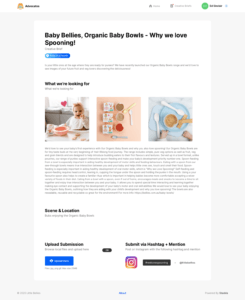
Georgie Scott, the marketing manager of Little Bellies, said, “When Stackla introduced its Organic Influencers tool, that was great for us because we were already getting so many people asking how they could get involved. Before we had to give people lengthy responses on social media but now we can just direct them to the advocates page on our website. It saves a lot of time from a community management point of view and is an easy way for people to sign up with us.”
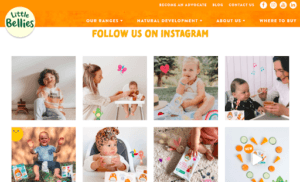
At the time we spoke with Little Bellies, they had over 360 happy customers in their advocate community and had generated over 640 pieces of rights-approved UGC.
Conclusion
Once you have the right tools in place to help you find, manage and display UGC, you’ll find it to be the most cost-effective and scalable way to create the visually engaging, personalized content experiences that consumers seek. In turn, you’ll be rewarded with positive marketing numbers and impact on the bottom line.
We hope this ultimate guide has given you a better idea of what is user-generated content. Ready to start leveraging UGC? Fill out the form below to schedule a demo with Stackla today!

